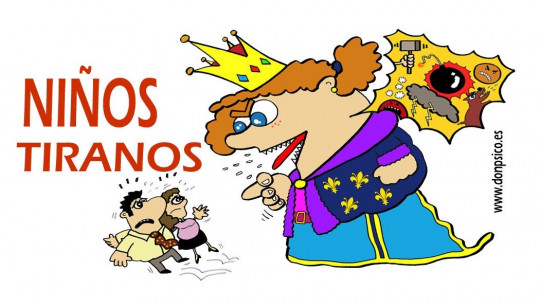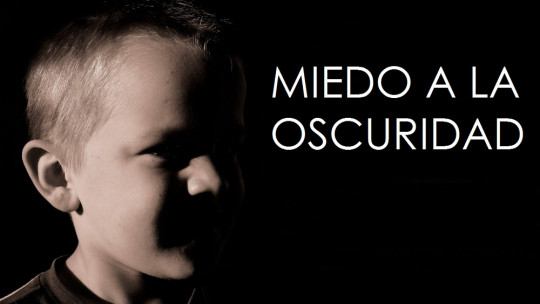
Many parents will have noticed that, when they are very little, their children do not cry when they are left alone in their room. This makes them think that their children are not afraid of being left alone and, for this reason, they do not put up much of a fight.
However, this belief goes to pieces when the baby, who is already a few months old, now really misses them: he cries, screams, throws tantrums… What happened? Why was it not a problem before to be alone and now it is?
We have the answer to this in the idea of the permanence of the object a capacity that develops as the child surpasses the first two years of life.
What is object permanence?
During the first months of life, When any object is out of the baby’s sight, in his mind this object ceases to exist It’s like it fades away. If you don’t see it, it doesn’t exist and that’s it. However, from 4 months onwards, very gradually, they understand that not seeing an object does not mean that it has disappeared, but rather that it may be hidden. We call this object permanence, and it is an ability especially described by the famous Swiss psychologist Jean Piaget and the main achievement of the sensorimotor stage.
Having the ability to mentally represent an object is a fundamental aspect so that, when you stop seeing it, you understand that it still exists. Newborn children do not have the ability to internally represent objects, people or other elements, so if they stop seeing them they automatically behave as if they had vanished. For example, when his parents leave the room, take away the bottle, or simply do not see a toy, the baby believes that it no longer exists.
However, As he grows, he is increasingly aware that not seeing something is not synonymous with it no longer existing Although very timidly, the notion of object permanence develops with age. First, the baby understands that if she sees parts of a half-hidden object, it means that the object in question is there. Later, when they hide a toy from her, as long as she saw how they hid it, she will go in search of it. Once she is two years old, she is already able to look for her objects on her own.
How is this skill developed?
In his theory of cognitive development, Piaget speaks of up to six substages in which the notion of object permanence develops.
1. Substage of reflex activity
This substage goes from birth to the first month. The baby learns how his body can move, although he still has very blurry vision and his attention spans are rather short It is limited to exercising innate reflexes.
The three main achievements of this substage are finger licking, following something that moves with your eyes, and closing your hands.
2. Substage of primary circular reactions
It corresponds to months 1 to 4 of life. The baby sees the objects and begins to focus on them more When an object is hidden, the baby may try to look for it for a while, but she will not try very hard and, after a short time, she will pretend that it no longer exists. There is no permanence of the object in any way.
However, the baby does show certain anticipatory responses to familiar images and sounds, such as opening his mouth at a spoon or sucking at the air when seeing a bottle. Her actions are less reflective than in the previous substage, and she already behaves more intentionally. She figures out how to use her body.
3. Substage of secondary circular reactions
This stage goes from 4 to 8 months. Babies reach for objects that are partially hidden, especially in the seventh month It is not permanence of the object at all, since if the object is completely hidden the baby will not look for it.
4. Coordination substage of secondary circular reactions
This stage goes from 8 to 12 months and we can now talk about object permanence The child is capable of recovering an object that is completely hidden in the same room, as long as he has seen how it was hidden.
5. Tertiary circular reactions
This stage goes from 12 to 18 months. The boy is able to retrieve an object hidden several times within his or her point of view, but cannot locate it when it is outside his or her perceptual field That is, if a toy is hidden without him seeing it and in a place that does not sound like he could be, the child will not find it. This is because the baby does not yet have the internal representation capacity to represent the object and imagine various places where it could be.
6. Symbolic problem solving
The child already perfectly understands the idea of object permanence. Is able to understand that objects may be hidden in new places, that is, you can make a mental representation that a bear is, for example, inside a container, even if you have never seen it there before. You can mentally represent images of the object and consider different scenarios where it could be. You don’t need to have seen how they hid it from you to go in search of it.
What is the relationship between object permanence and separation anxiety?
There is a lot of relationship between object permanence and separation anxiety. Surely many parents will have experienced it first-hand, especially if they have enrolled their children in daycare very early
The first months, when they are barely a year old, they behave very well when their parents leave once they have left them there. However, as they grow there is a time when they start to cry when left alone, whether in daycare or anywhere else.
This separation anxiety is explained by the notion of object permanence. The little boy begins to understand that his parents have not disappeared, but that they are gone, and he does not know when they will return Being left alone by their main attachment figures is something that babies can experience with great distress and may even interpret as abandonment, which is why they start crying.
How to find out if the baby has acquired this skill?
Although Piaget’s findings have been fundamental for developmental psychology, there are many who question them. We have an example of this in TGR Bower, who With his experiments he found cases of complete acquisition of object permanence in children as young as 3 months old something that is very premature considering that Piaget spoke of, at least, 16 months.
Whether true or not, there should be no doubt that each child is different and that the speed with which they will acquire object permanence varies from person to person. The substages proposed by Piaget should not be seen as the fixed and immovable normal, since there may be children who take a little longer and others who take a little less. There has even been debate about whether object permanence depends on cultural factors and early stimulation.
There are many games that parents can use to check to what extent their child has or has not developed the first signs of object permanence and see if he is advanced or a little behind his chronological age. Next we are going to talk about two very simple and easy to do at home.
1. The Cucú-tras
Peek-a-boo is the typical game that every father, mother, brother and grandfather has played with a newborn. It simply consists of the adult covering his face with his hands saying “Where is Menganito?” and then he uncovers it and says, “Here he is.” This typical game may seem like a very basic thing, but if another person observes how the child reacts when the person in front of him covers his face, he will understand to what extent he has or does not have a slight notion of object permanence.
If you have not yet developed this skill at all, the moment your father or mother covers their face they will be truly impressed It’s like he’s wondering, “Has Dad disappeared?” he is no longer in front of me.” From about 8 months onwards, this trick will no longer serve to entertain the baby, since he understands that behind the hands there is a face, especially if he continues to see the ears or the hair.
2. Hide toys and play hide and seek
If what we want to do is replicate Piaget’s experiment, the best way is to use toys and hide them. Depending on how we hide them, we can discover which substage it is in We can also play hide and seek and see how the little one reacts.
Maybe by partially hiding it, the baby understands that the toy is there, but when we hide it completely, even if he saw how we did it, he no longer goes looking for it. It can also be done by playing hide-and-seek, making your attachment figure hide partially or completely and having the child see how he did it. In this case, it would be in the substage of secondary circular reactions.








